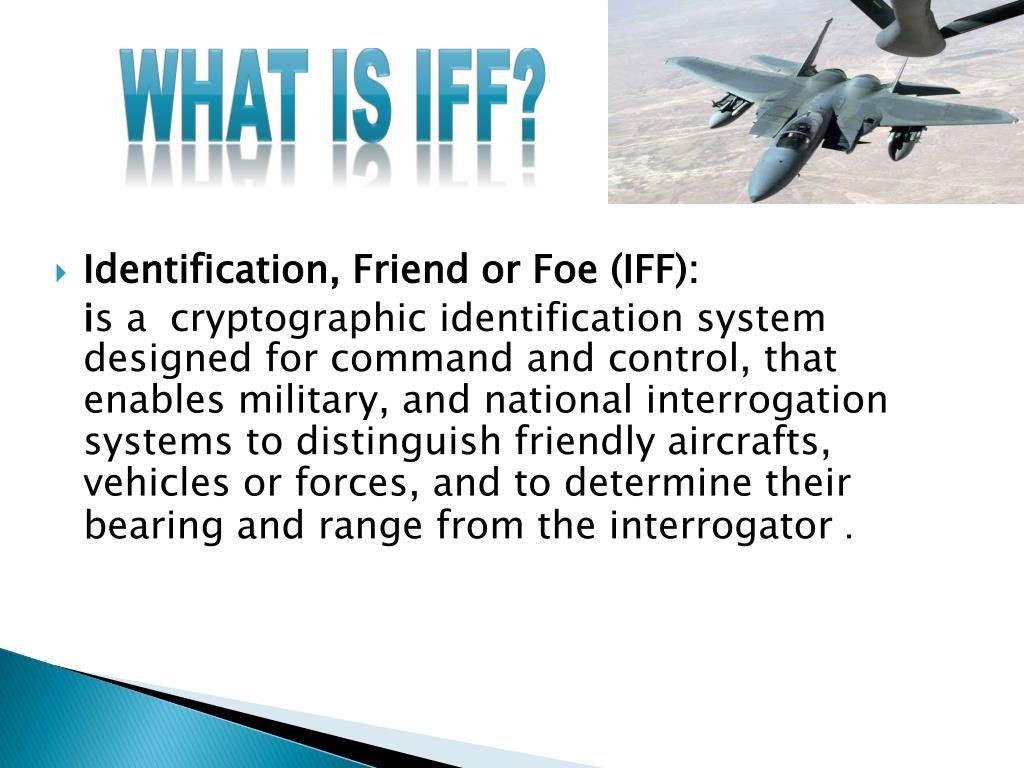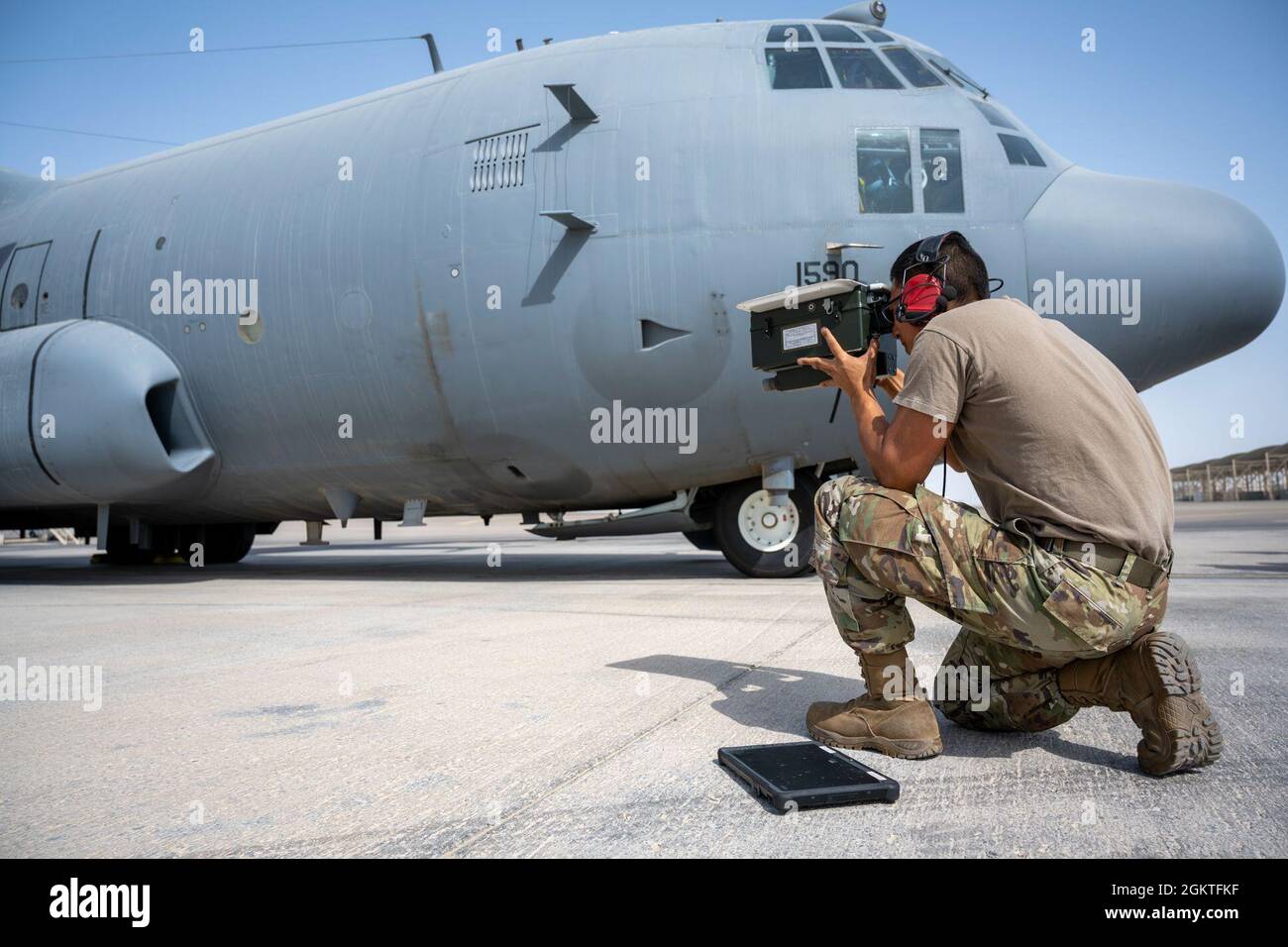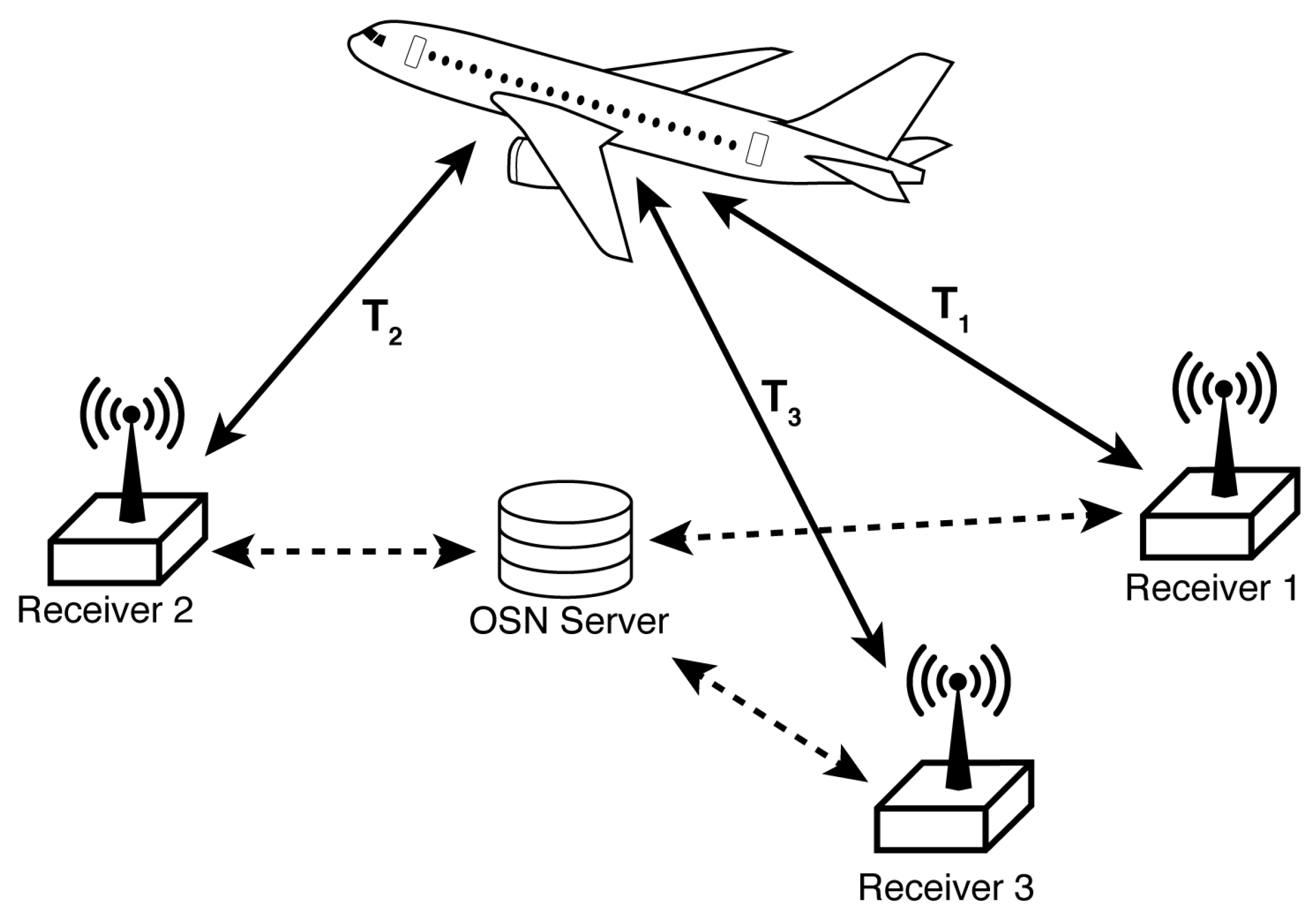Aircraft Identification Friend Or Foe - Mode S – provides multiple information formats to a selective interrogation. Typically aircraft are assigned a unique 24-bit Mode S address. The Mode S address is partitioned and a group of address ranges are allocated to each country.
Some countries change the assigned address for security reasons, and thus it might not be a unique address. (military and civilian)[citation needed] IFF was first developed during World War II. The term is something of a misnomer, as IFF can positively identify friendly targets but not hostile ones.
Aircraft Identification Friend Or Foe
If an IFF interrogation receives no reply or an invalid reply, the object cannot be identified as friendly but is not positively identified as a foe. Mode 5 – provides a cryptographically secured version of Mode S and ADS-B GPS position.

(military only) [6] Mode 5 is divided into two levels. Both are crypto-secure with Enhanced encryption, Spread Spectrum Modulation, and Time of Day Authentication. Level 1 is similar to Mode 4 information but enhanced with an Aircraft Unique PIN.
Level 2 is the same as Mode 5 level one but includes additional information such as Aircraft Position and Other Attributes.[citation needed] There are many reasons for friendly aircraft not to reply to IFF, such as battle damage or equipment failure, loss of encryption keys, and wrong encryption keys.

Terrain-hugging aircraft are very often poor candidates for microwave line-of-sight systems such as the IFF system. Microwaves cannot penetrate terrain, and very often atmospheric effects (referred to as anomalous propagation) cause timing, range, and azimuth issues.[citation needed]
The world's first IFF, FuG 25a "Erstling" (English: "Debut"), was developed in Germany in 1940. It received the radar frequencies on 125 MHz (Freya radar) and 550-580 MHz (Würzburg radar). To start the identification procedure, the ground operator switched the pulse frequency of his radar from 3,750 Hz to 5,000 Hz.

IFF is used by both military and civilian aircraft. Modes 1, 2, 4 and 5 are for military use only. Modes 1, 2 and 3/A are collectively known as Selective Identification Feature (SIF) modes. Civilian aircraft use modes 3/A, C and S. Mode C which includes barometric pressure altitude information is often used in conjunction with mode 3/A.
Mode S is a new civilian mode developed to replace both mode 3/A and C.[citation needed] In telecommunications, identification, friend or foe (IFF) is an identification system designed for command and control. It enables military and national (civilian-located ATC) interrogation systems to identify aircraft, vehicles or forces as friendly and to determine their bearing and range from the interrogator.

IFF may be used by both military and civilian aircraft. An IFF transponder receives interrogation pulses at one frequency, and sends the reply pulses at a different frequency (1030 MHz and 1090 MHz in the MK XII system.).
In modes 1, 2, 3/A, and C, the interrogator challenge is composed of two pulses spaced apart by a different amount for each mode, with the transponder reply being a long series of bits; In the encrypted military mode 4, the IFF interrogation is instead a long series of bits that contains the encrypted message and parity, and the reply is just three pulses.[citation needed]

Uploaded by Kai Butcher on October 29, 2022 If no encrypted mode 4 or 5 reply is received from the IFF transponder, the nature of the target continues to be unknown. The IFF system does not definitively declare a target hostile if it does not reply correctly: pilots may have the wrong code (encryption key) selected, or be using an expired code.
They will have an audible and visual alarm every time they are interrogated by IFF; if they cannot clear the alarm they have a defined pre-briefed safe passage procedure to follow.[citation needed] The airborne receiver decoded that and started to transmit its code.
Before departure, two mechanical keys of ten bits each were inserted into the shown reader. The IFF transmitter worked on 168 MHz with a power of 400 Watt (PEP). Unfortunately for the Germans, British military scientists designed and built their own IFF transmitter called "Perfectos", which was designed to trigger a response from any FuG 25a systems in the vicinity.
When mounted in an RAF Mosquito, the "Perfectos" device revealed the position of any German nightfighters fitted with an FuG 25a. As a result, the British "Perfectos" device severely compromised German use of the FuG 25a.
The United States and other NATO countries started using a system called Mark XII in the late twentieth century; Britain had not until then implemented an IFF system compatible with that standard, but then developed a program for a compatible system known as successor IFF (SIFF).[5]

0 Comments